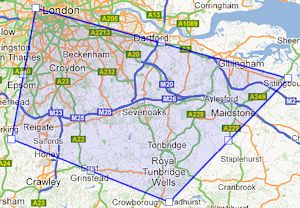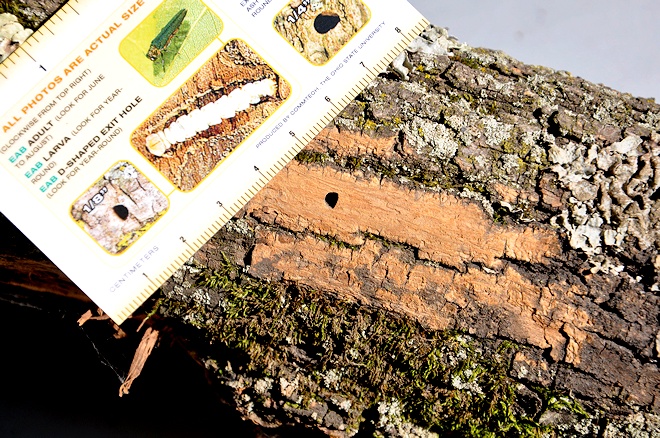
TreeAbility specialise in the diagnosis and treatment of tree and hedge diseases. As more diseases invade from around the world preserving our trees and hedges is becoming increasingly important. TreeAbility have expert knowledge of tree pests and diseases. We can diagnose problems and advise on the health of your trees. Some of the major treatments we offer are:
Conifer Aphids (Cinara cupressivora)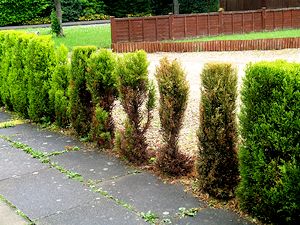 These aphids suck the sap from the green foliage of your conifer hedges causing unsightly brown patches. The patches slowly spread as the conifer aphids denude the shoots they are on and move further afield. Over time whole sections of hedge are killed. It is important to catch this pest early as conifer hedges do not regrow from brown foliage so important screening can be lost. Castlewellan Gold and Leylandii hedges are particularly affected. Paradoxically, the better the kept hedge the better habitat for aphids which can be heart-breaking for keen gardeners with tightly trimmed hedges. TreeAbility use a targeted spray on the affected hedges which is not damaging to other wildlife or plants. If you think you have this pest please contact us for a free appraisal.
These aphids suck the sap from the green foliage of your conifer hedges causing unsightly brown patches. The patches slowly spread as the conifer aphids denude the shoots they are on and move further afield. Over time whole sections of hedge are killed. It is important to catch this pest early as conifer hedges do not regrow from brown foliage so important screening can be lost. Castlewellan Gold and Leylandii hedges are particularly affected. Paradoxically, the better the kept hedge the better habitat for aphids which can be heart-breaking for keen gardeners with tightly trimmed hedges. TreeAbility use a targeted spray on the affected hedges which is not damaging to other wildlife or plants. If you think you have this pest please contact us for a free appraisal.
Horse Chestnut Leaf Miner (Cameraria ohridella).
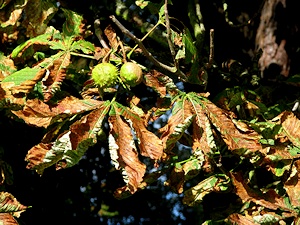 This is a moth that in its larval stage burrows through leaves causing necrosis. The resulting brown dead patches prevent the leaf from effectively photosynthesising. Whole leaves will gradually die over summer causing premature leaf fall. Consequently the tree fails to make enough sugars for its energy storage phase of growth and suffers longer term decline. The tree is also predisposed to further infections such as Bleeding Canker. Tree Ability uses a systemic insecticide administered as a soil drench at the base of the tree to treat Horse Chestnut Leaf Miner. No beneficial insects are harmed as the soil drench is specifically targeted for that tree only.
This is a moth that in its larval stage burrows through leaves causing necrosis. The resulting brown dead patches prevent the leaf from effectively photosynthesising. Whole leaves will gradually die over summer causing premature leaf fall. Consequently the tree fails to make enough sugars for its energy storage phase of growth and suffers longer term decline. The tree is also predisposed to further infections such as Bleeding Canker. Tree Ability uses a systemic insecticide administered as a soil drench at the base of the tree to treat Horse Chestnut Leaf Miner. No beneficial insects are harmed as the soil drench is specifically targeted for that tree only.
Bleeding Canker of Horse Chestnut
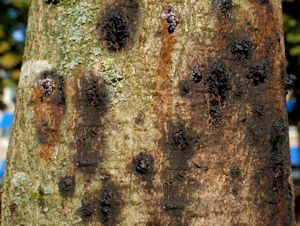 This problem is attributed to two diseases, Phytophthora and Pseudomonas syringae. It kills the vascular system of the tree and in severe cases causes the whole tree to die. It heavily affects Horse Chestnut trees amongst others and is evidenced by red or rusty bleeding patches on the bark of trees. It attacks weakened trees especially those depleted by Horse Chestnut Leaf Miner. The best defence against this disease is for a tree to be fit and healthy. We can advise on how to obtain optimal tree health for your horse chestnut trees to avoid the disease and also treat the disease via stimulating the trees immune system to fight off the pathogens. Soil treatment via the addition of calcium helps to strengthen the cell walls of the tree and the addition of woodchip mulch can also reduce the spores in the ground as mulch has been found to be antagonistic to Phytophthora as it decomposes.
This problem is attributed to two diseases, Phytophthora and Pseudomonas syringae. It kills the vascular system of the tree and in severe cases causes the whole tree to die. It heavily affects Horse Chestnut trees amongst others and is evidenced by red or rusty bleeding patches on the bark of trees. It attacks weakened trees especially those depleted by Horse Chestnut Leaf Miner. The best defence against this disease is for a tree to be fit and healthy. We can advise on how to obtain optimal tree health for your horse chestnut trees to avoid the disease and also treat the disease via stimulating the trees immune system to fight off the pathogens. Soil treatment via the addition of calcium helps to strengthen the cell walls of the tree and the addition of woodchip mulch can also reduce the spores in the ground as mulch has been found to be antagonistic to Phytophthora as it decomposes.
Honey Dew Deposits
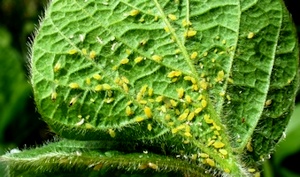 Aphids on trees secrete a goo which causes sticky deposits on cars and patio furniture. Many of you will sometimes have parked under a specific tree only to return and find the car is covered in sticky goo. Certain trees are more susceptible to this problem than others. Trees particularly affected are limes and sycamores. Via the use of a systemic insecticide we can control the aphids and prevent the problem. Due to the systemic nature of the treatment no other beneficial insects are harmed.
Aphids on trees secrete a goo which causes sticky deposits on cars and patio furniture. Many of you will sometimes have parked under a specific tree only to return and find the car is covered in sticky goo. Certain trees are more susceptible to this problem than others. Trees particularly affected are limes and sycamores. Via the use of a systemic insecticide we can control the aphids and prevent the problem. Due to the systemic nature of the treatment no other beneficial insects are harmed.
